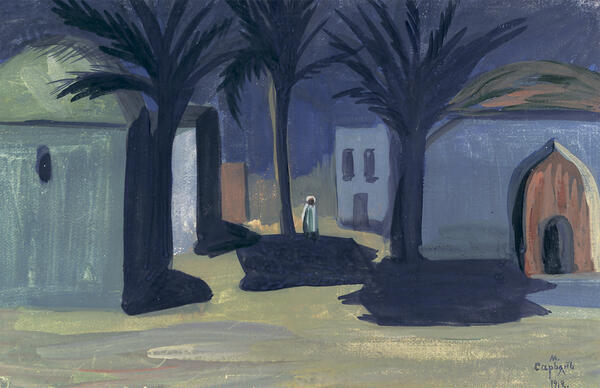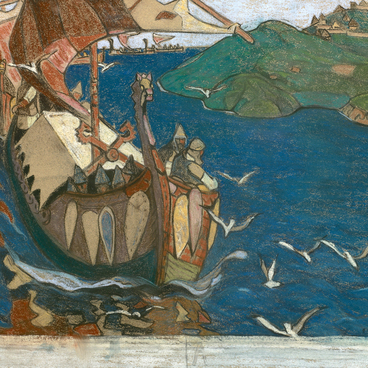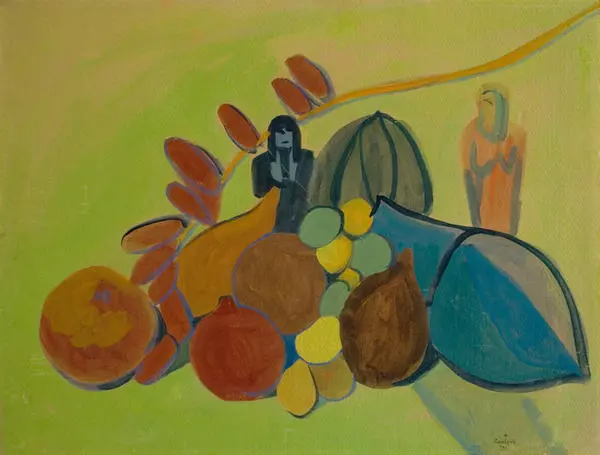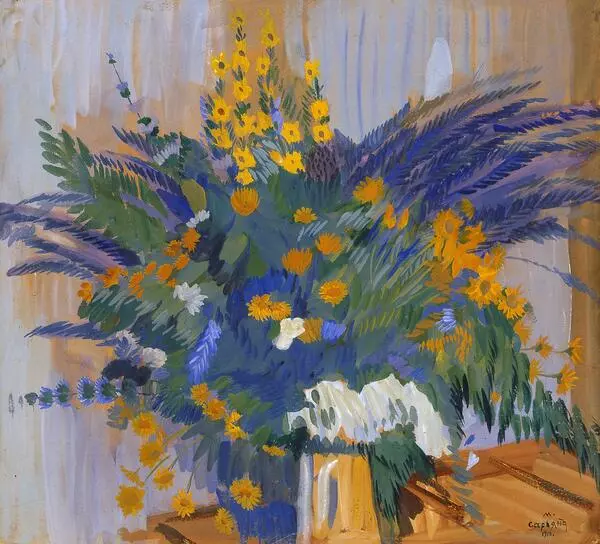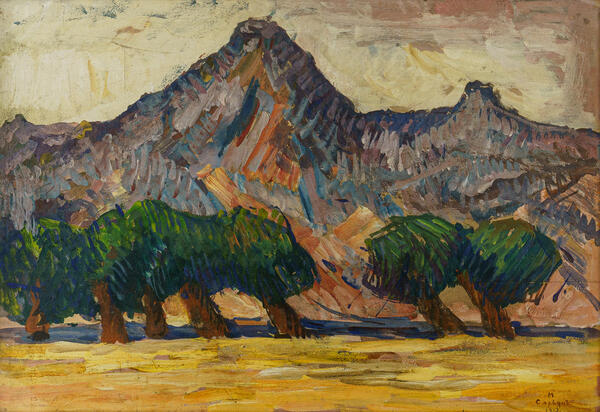Soviet artist Martiros Saryan was born in 1880 in Rostov-on-Don. At the age of 15 he graduated from the city school and then studied at the Moscow School of Painting, Sculpture and Architecture in the workshops of Serov and Korovin.
At the age of twenty, the artist first went to Armenia. The characteristic landscapes and character of local people gave a strong impetus to his creative search.
Seeing the beauty of the Caucasus and his native Armenia, the artist understood where to move and where to look. All childhood impressions and the fabulous world of childhood seemed to come to life and become reality. Seeing Matisse and Gauguin in 1906, Saryan was only convinced of the correctness of his searches.
Since 1908, the artist begins to experiment with color. Under the influence of the southern sun, the palette of the artist’s works changes. He leaves the old dark colors, replacing them with bright, sunny and expressive-emotional. The harmony of colors, laconism, accuracy of images and oriental flavor become the artist’s hallmark.
The active period of participation in exhibitions of art associations ‘The World of Art’, ‘The Golden Fleece’, ‘Blue Rose’ and others begins. This period of Saryan’s formation as an artist ends with a trip to the East, which became a real breakthrough for him. It was as if all the codes of the East that he absorbed woke up in him. It was not so much recognizing the East as recognizing oneself, one’s nature, one’s culture, and one’s roots. ‘I had a goal to understand the East, to find its characteristic features in order to further substantiate my quest in painting, ” the artist wrote. “I wanted to convey the realism of the East, find convincing ways of depicting this world, […] to reveal its new artistic understanding”.
Saryan visited Turkey, Egypt, and Persia. There were plans also for China, India and Japan, but the First World War and the revolution did not allow them to come true.
The trip to Egypt enriched Saryan’s work with new paintings. The artist was struck by the connection between times, antiquity and modernity, and ultimately by the spirit of eternity and immortality: nothing and no one dies.
Returning to Moscow, he created a number of small paintings in which he presented the streets of an eastern city where people and animals peacefully coexist. One of these paintings is ‘The Egyptian Night’. There is no narration in the work; this is not a genre painting. A simple, uncomplicated plot is built through a harmonious combination of silhouette forms, painted in bright colors. The artist is laconic – he does not exaggerate the forms, but generalizes them decisively and boldly.
Saryan creates depth and volume with contrasting blue colors. While working on his paintings, Saryan rarely mixed colors, considering: ‘paints, like people, have their own unique individuality, and one must respect it. The colors in the painting should be like soloists in an ensemble, and not like singers in a choir, who are not perceived individually, but in groups or even all together. What a pleasure it is to see a faceless crowd instead of individuals’.
At the age of twenty, the artist first went to Armenia. The characteristic landscapes and character of local people gave a strong impetus to his creative search.
Seeing the beauty of the Caucasus and his native Armenia, the artist understood where to move and where to look. All childhood impressions and the fabulous world of childhood seemed to come to life and become reality. Seeing Matisse and Gauguin in 1906, Saryan was only convinced of the correctness of his searches.
Since 1908, the artist begins to experiment with color. Under the influence of the southern sun, the palette of the artist’s works changes. He leaves the old dark colors, replacing them with bright, sunny and expressive-emotional. The harmony of colors, laconism, accuracy of images and oriental flavor become the artist’s hallmark.
The active period of participation in exhibitions of art associations ‘The World of Art’, ‘The Golden Fleece’, ‘Blue Rose’ and others begins. This period of Saryan’s formation as an artist ends with a trip to the East, which became a real breakthrough for him. It was as if all the codes of the East that he absorbed woke up in him. It was not so much recognizing the East as recognizing oneself, one’s nature, one’s culture, and one’s roots. ‘I had a goal to understand the East, to find its characteristic features in order to further substantiate my quest in painting, ” the artist wrote. “I wanted to convey the realism of the East, find convincing ways of depicting this world, […] to reveal its new artistic understanding”.
Saryan visited Turkey, Egypt, and Persia. There were plans also for China, India and Japan, but the First World War and the revolution did not allow them to come true.
The trip to Egypt enriched Saryan’s work with new paintings. The artist was struck by the connection between times, antiquity and modernity, and ultimately by the spirit of eternity and immortality: nothing and no one dies.
Returning to Moscow, he created a number of small paintings in which he presented the streets of an eastern city where people and animals peacefully coexist. One of these paintings is ‘The Egyptian Night’. There is no narration in the work; this is not a genre painting. A simple, uncomplicated plot is built through a harmonious combination of silhouette forms, painted in bright colors. The artist is laconic – he does not exaggerate the forms, but generalizes them decisively and boldly.
Saryan creates depth and volume with contrasting blue colors. While working on his paintings, Saryan rarely mixed colors, considering: ‘paints, like people, have their own unique individuality, and one must respect it. The colors in the painting should be like soloists in an ensemble, and not like singers in a choir, who are not perceived individually, but in groups or even all together. What a pleasure it is to see a faceless crowd instead of individuals’.

